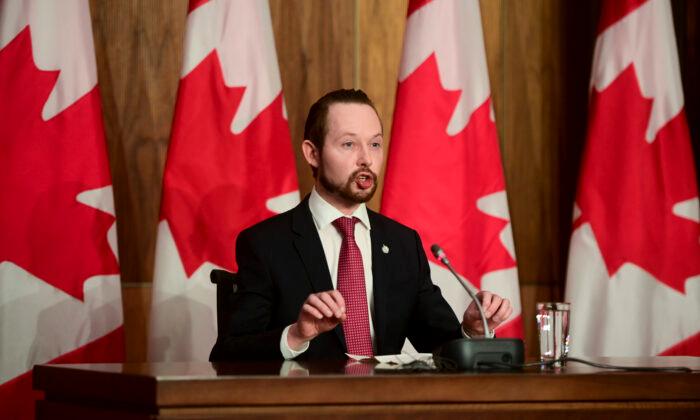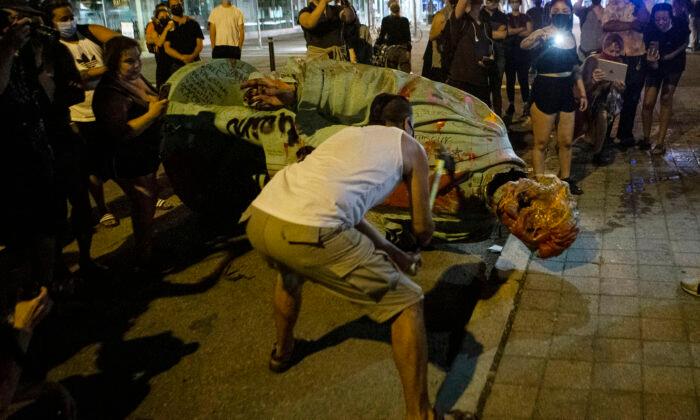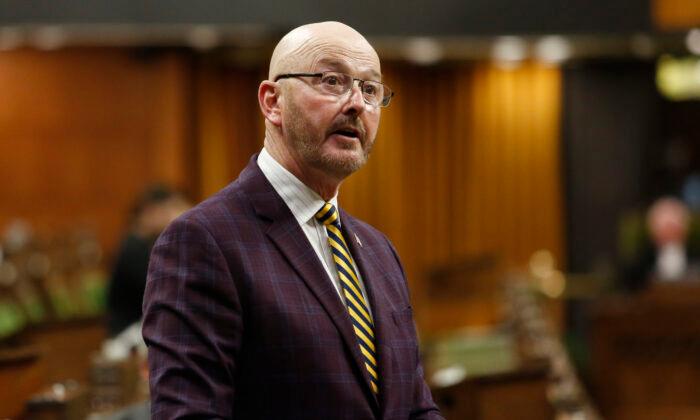Irregular border crossings into Canada increased exponentially in 2017 and have shown no sign of slowing down. Since then, about 20,000 asylum-seekers a year have crossed into Canada from the United States through unofficial entry points.
Most of the blame for the increase has been placed at the feet of changing immigration policies under the Trump administration. But a new study says that’s an oversimplification, noting that there’s a “widespread practice” of migrants entering the United States legally with the sole purpose of crossing into Canada outside a designated border crossing.
“The claim that these people are fleeing the Trump administration, Trump policies, and whatnot is simply not accurate. It simply doesn’t represent the majority of people who are entering the country by these means,” says Christian Leuprecht, Munk Senior Fellow at the Macdonald-Laurier Institute and author of the study titled “The End of the (Roxham) Road: Seeking Coherence on Canada’s Border-Migration Compact.”
Although the move by President Donald Trump to end a program offering temporary protected status to U.S. residents from Haiti and some other countries by 2020, this measure has had little effect on the flow of irregular migrants crossing into Canada, the study says. And focusing on it as the main reason “could lead us to the wrong policy responses.”
“[I]t leads to a misinformed prescription, such as simply waiting out the current U.S. presidential administration in the misguided belief that Trump and his policies are merely an aberration,” it says.
“In reality, the surge in irregular migration is due to a myriad of complex factors, including but not limited to changing conditions in the U.S. that predate the Trump administration, changes in Canadian border policies, and an array of international drivers over which both countries have little control.”
One of those drivers is human smuggling. The study says Canadian intelligence has identified organized crime as a facilitator in enabling the transit of refugees through Mexico and the United States to Canada, including providing advice on how to sneak into Canada and what to tell officials upon arrival.
Some NGOs and church groups along the border are also part of the problem, Leuprecht says. “There’s a well-known church in Buffalo that provides very clear instructions to migrants what to say and what not to say when they arrive in Canada, and what your greatest chance of success is when you lodge your claim.”
The study says about two-thirds of asylum-seekers crossing irregularly into Canada by land actually enter the United States legally with that objective. They obtain a U.S. visitor visa “for the sole purpose” of crossing the border outside a designated port of entry and lodging an asylum claim in Canada.
Exploiting a Loophole
Roxham Road, which runs through the border of Quebec and New York State, is the busiest site for irregular border crossings in Canada, the others being in British Columbia and Manitoba.Under the Canada-U.S. Safe Third Country Agreement (STCA), asylum-seekers at a formal border checkpoint travelling in either direction are turned back and told to apply for asylum in the country where they first land. But they can claim refugee status if they are already in Canada, which is why so many have been crossing on foot at unofficial entry points.
After they enter Canada in this way, asylum-seekers are arrested, make asylum claims—which can take years to be processed—and begin receiving social welfare benefits.
The study notes that a “disproportionate number of refugee claims by irregular migrants turn out to be unfounded, yet few rejected claimants ever end up being deported.” This only confirms what 47 percent of Canadians already believe: “that most refugee claimants are not genuine refugees,” it says, citing a 2019 Ipsos survey.
Reinstating ‘Direct Back’ a Solution?
People “jumping the queue” in this way has fuelled fierce debate and sparked calls for Canada to amend or suspend the border agreement. The Conservative Party has called for the loophole to be closed, saying that irregular migrants pose a potential security risk and that Prime Minister Justin Trudeau in part caused the surge via his “#WelcomeToCanada” tweet days after Trump announced a ban on refugees from certain Muslim-majority countries in January 2017.Former border security minister Bill Blair, now minister of public safety, said in March that he was in talks with U.S. lawmakers about closing the loophole and exploring ways to “disincentivize” people from crossing irregularly.
Leuprecht says suspending the agreement would actually increase the flow of irregular migrants, while amending it so that RCMP may turn the migrants over to U.S. authorities to make their claim from the United States would result in more people crossing between official entry points.
He suggests reinstating the “Direct-Back” provision, a section of the Immigration and Refugee Protection Act that was suspended after the STCA went into effect in 2004.
This would mean asylum-seekers arriving at the border would be “directed back” to lodge claims from U.S. soil—a policy similar to what U.S. President Donald Trump put in place regarding migrants from Central America who go to Mexico with the aim of crossing into the United States. This approach is also being implemented by the EU and Australia, he says, “becoming the global norm.”
Meanwhile, irregular asylum methods undermine the immigration system Canada has traditionally been known for and challenge the legitimacy of the social contract it is based on—especially its approach to refugees, Leuprecht says.
This social contract has three components, he adds: a well-managed migration system to ensure the integrity of Canada’s borders; the successful political and economic socialization and integration of migrants; and migrants’ synergistic contribution to advancing Canadian prosperity and well-being.
“With those being undermined then it’s undermining popular support both for our refugee and asylum system and for our immigration system, and that’s fundamentally a threat to Canadian prosperity,” he says.





